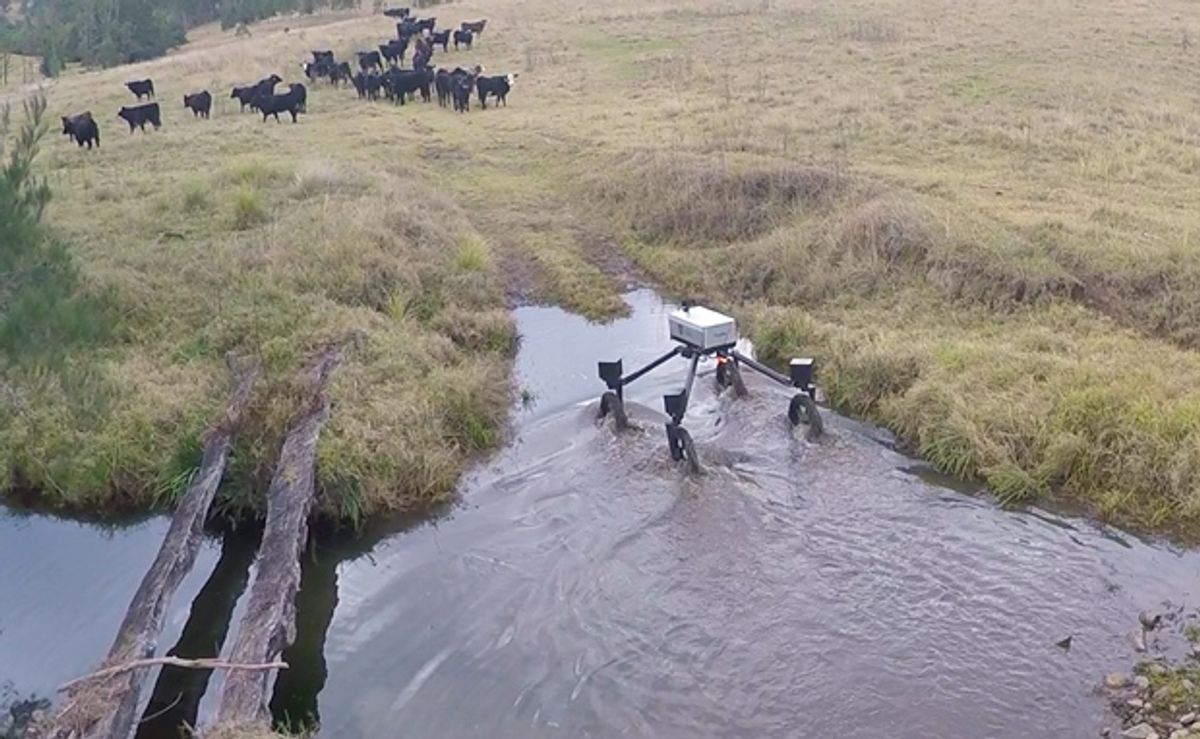Australia, we hear, is a big place. All that space is nice to have if you’re raising cattle, except for the fact that you’ve got to keep track of them all somehow. For ranchers, this is a lot of work, and for cattle, it means that they don’t get checked on very regularly. This would be a good opportunity for robots to step in and offer some assistance, but the problem is most robots would be crazy to try getting themselves around the kind of terrain that Australia is made of.
In order to tackle the hills, dales, fields, cliffs, rivers, swamps, crocodiles, platypuses, echidnas, koalas, quolls, emus, kangaroos, wallabies, wombats, and dingoes (to name just a few common obstacles in Australia), researchers from the Australian Centre for Field Robotics at the University of Sydney led by Dr. Salah Sukkarieh have designed and tested an all-terrain robot called SwagBot that’s designed to be able to drive over almost anything while helping humans manage their ranchland.
This video is a bit long; if you don’t have 7 minutes to spare, you should reevaluate your priorities and then make sure and watch the clips at 1:15 (monitoring animals), 1:40 (obstacle traversal), 2:40 (aerial vehicle coordination), and 6:40 (waterproof drive systems).
SwagBot is designed to “work in highly undulating terrain, for the purposes of supporting farmers in grazing livestock operations,” Dr. Sukkarieh told us. The robot is electric, with a rugged waterproof chassis that can deal with almost anything Australia can throw at it. It’s not autonomous yet; it just uses vision right now to see the animals, but the researchers are working on figuring out what kinds of sensing systems they’ll need to do a variety of different activities.
Depending on what sensors SwagBot ends up with, it could be used to track the location of animals, monitor their health (using thermal sensors or through direct sampling of their, uh, poo), perform biomass measurements, or even do weeding. The project is scheduled to run for at least two more years, and Dr. Sukkarieh says that they’re planning on developing the autonomy of the robot as much as they can:
“Over the coming year the focus is to go full autonomy over areas that have been previously mapped to ensure the robot can operate safely. The robot will also have collision avoidance sensors installed as well as specific sensors for animal monitoring. Over the coming year we also plan on doing tasks such as autonomous delivery, and weeding. In the final year we hope to undertake greater intelligent tasks such as animal following.”
And since I’m sure you’re wondering as much as we were: Dr. Sukkarieh told us that SwagBot is named after “swagmen,” which is an Australian (or New Zealand) term for someone who would travel from farm to farm to undertake various farm activities. “This is the automated version,” he says.
[ SwagBot ]
Evan Ackerman is a senior editor at IEEE Spectrum. Since 2007, he has written over 6,000 articles on robotics and technology. He has a degree in Martian geology and is excellent at playing bagpipes.


